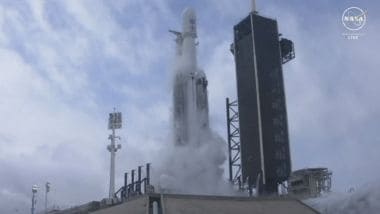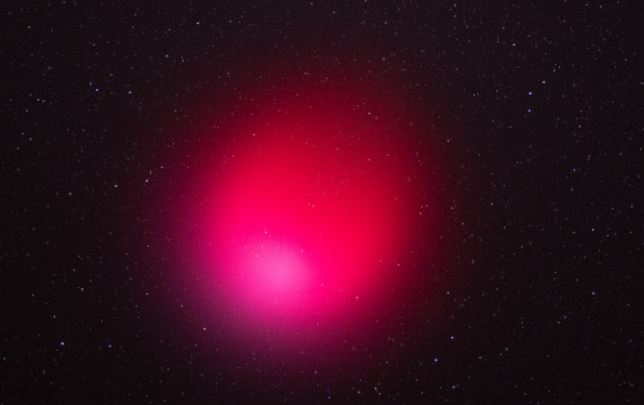There is a new phenomenon in the night sky:SpaceX’s aurora borealis“They are red, almost spherical and can be seen with the naked eye for up to 10 minutes.”We see 2 to 5 every month,“He announced Stephen Hamel From the McDonald Observatory in Texas, according to the specialized website SpaceWeather.com edited by astrophysicist Tony Phillips (above what was observed last November 3). Obviously, these are not the northern lights. These bright red circles are caused by SpaceX rockets Which launches its engines into the ionosphere.
“SpaceX’s aurora borealis” and the ionosphere
This phenomenon is closely related to something that has been observed several times this year. Falcon 9 rockets leaving Earth could create a “hole” in the ionosphereIt is the layer of ionized gas surrounding our planet, which is essential for shortwave radio communications beyond the horizon and can affect the quality of GPS signals. Rocket exhaust can attenuate local ionization by up to 70%, obliterating the ionosphere along the rocket’s path. For chemical reasons, ionospheric holes emit a red glow (630 nm).
SpaceX’s Aurora Borealis follows a similar mechanismHowever, it is not generated by ascending rockets, but rather by descending rockets. The Falcon 9 rocket’s second stage fires its engines to deorbit and return to Earth, blowing a hole in the ionosphere as it descends, according to SpaceWeather.com. “We first observed these burns resulting from SpaceX’s deorbit from the McDonald Observatory in February 2023.He explained Jeff Baumgarder, a space physicist at Boston University, has been studying ionospheric holes for more than 40 years. “The engine burn lasts only two seconds, long enough to drop the second stage over the South Atlantic. These ignitions occur about 90 minutes (about one orbital period) after launch. During ignition, the engine releases about 400 pounds of exhaust gases, mostly water and carbon dioxide. All this happens at an altitude of about 300 kilometers, near the top of the ionosphere, and a large hole occurs“.”The resulting “aurora borealis” can be so bright, it can be easily seen with the naked eye Brighter than the Starlink satellites themselveseven if only for a few seconds,Hamill noted.
SpaceX blew between impacts and research
The question at this point is: Do SpaceX’s aurora have positive effects? Negatives? Hamill is the Outreach Program CoordinatorLight pollution at the MacDonald Observatory, so he would naturally be concerned about the impact these events might have on observational astronomy. “The frequency of these red clouds may increase over time SpaceX will target more launches in the future,Hamel said.Its impact on astronomical science is still being evaluated. Satellites Starlink It is a known problem, but it has implications divorce to Missiles themselves an area of increasing interest“.
to Jeff BaumgarderThese events are a golden opportunity to… research“Launching rocket engines”They give the opportunity to explore how space traffic affects the ionosphere. The density of the ionosphere varies from night to night, so we can learn something about the efficiency of chemistry by observing many events“.
Continue reading on MeteoWeb

“Internet trailblazer. Travelaholic. Passionate social media evangelist. Tv advocate.”







More Stories
A new laser space communications system has been successfully tested
The globular cluster NGC 6440 in a new image taken by the James Webb Space Telescope
Exoplanet WASP-43 b: New details thanks to the James Webb Space Telescope